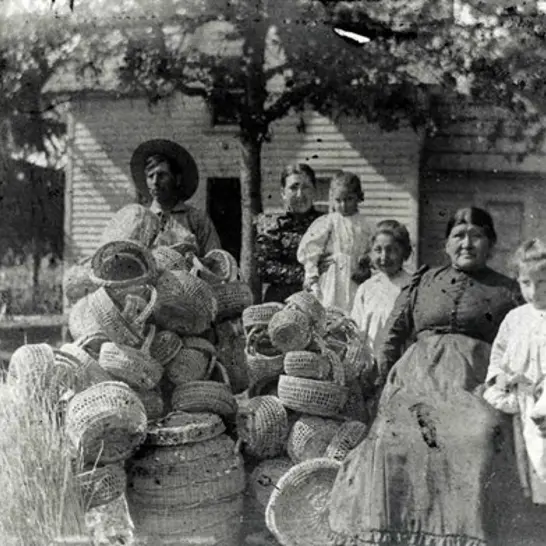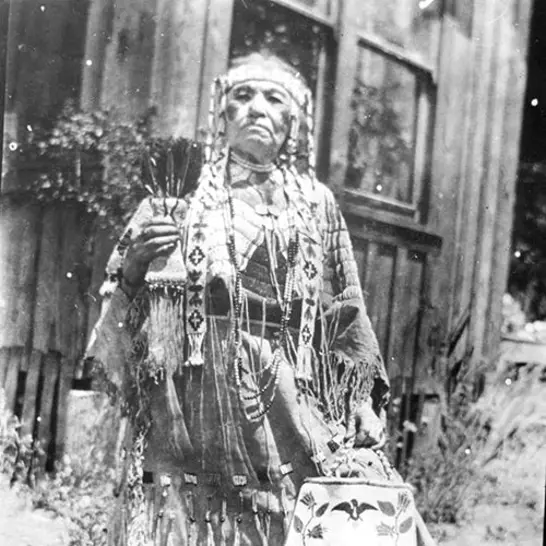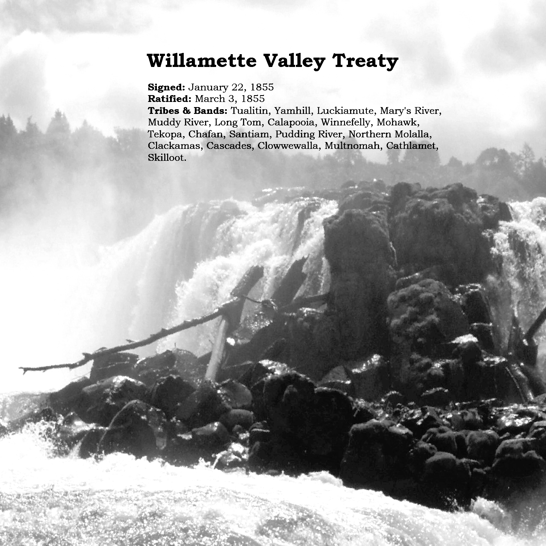Trail of Tears
Forced Removal
Native peoples inhabited western Oregon for thousands of years before European settlers arrived. The forced removal of Tribal members from their ancestral lands, leading to hardship, loss, and a profound shift in the lives of our people.
In the winter of 1856, the federal government began the forced removal of the Umpqua, Southern Kalapuya, Rogue River and Chasta peoples to what would become a 61,000-acre reservation in Oregon’s coast range. This “trail of tears” marched hundreds of native people over 200 miles north across rough terrain during harsh winter conditions. Many did not survive the journey. Similar forced marches also befell the people of the Willamette valley, neighboring peoples from throughout western Oregon, and those along the Columbia River.
After a period of thirty-three days in which time we traveled a distance of two hundred & sixty-three miles. Started with three hundred and twenty-five Indians. Eight deaths and eight births, leaving the number the same as when started.
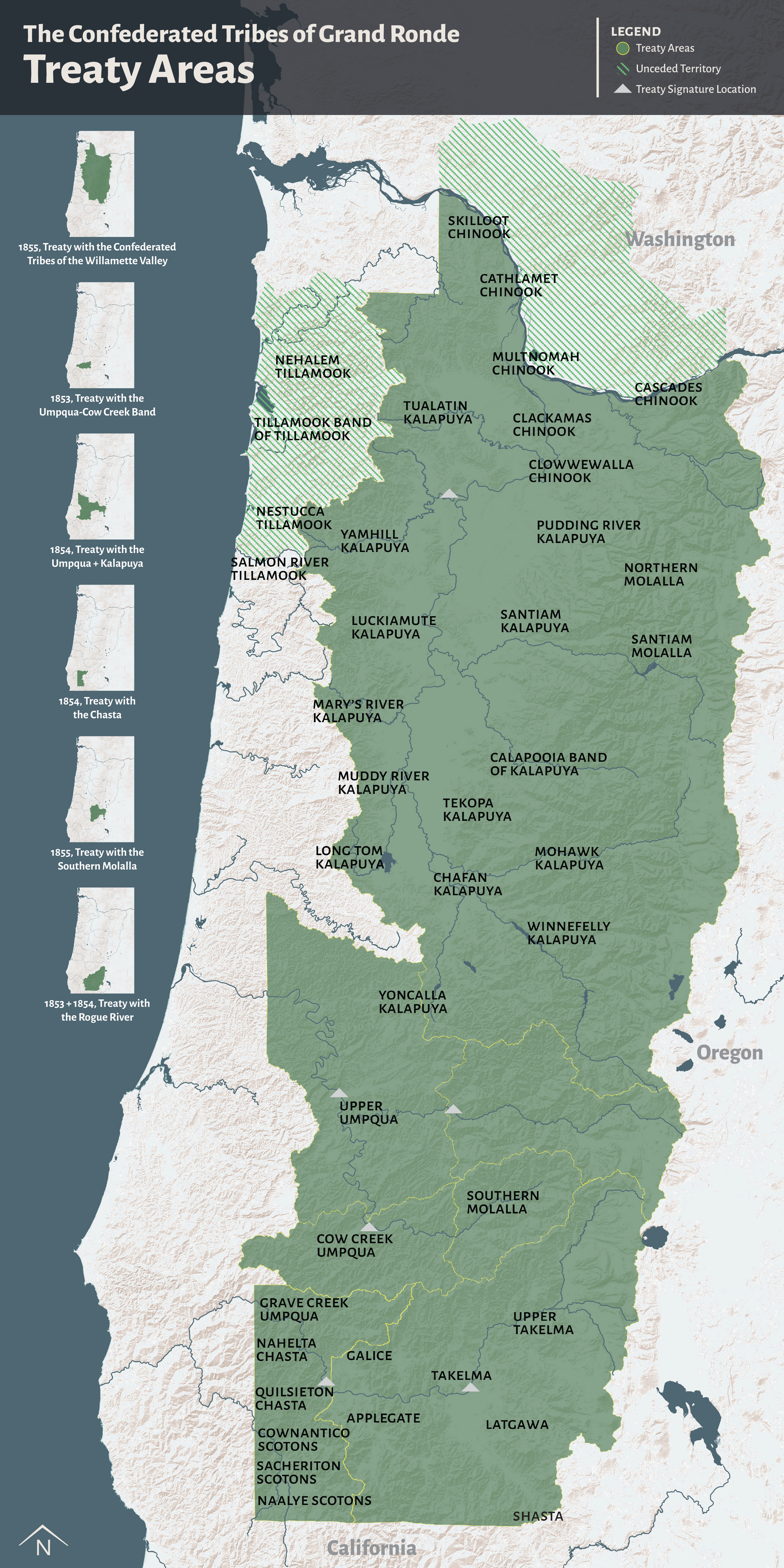
Oregon’s Trail of Tears
The Confederated Tribes of Grand Ronde were formed when the U.S. government forced member Tribes to cede their ancestral lands and created the 60,000-acre Grand Ronde Reservation in Oregon’s Coast Range. Beginning in February 1857, federal troops forced native people to march from a temporary reservation at Table Rock in southern Oregon 263 miles north across rough terrain to the newly created Grand Ronde Reservation.
Thus began Oregon’s “Trail of Tears.” The Rogue River and Chasta Tribes were the first to be removed from their aboriginal lands. They were joined by members of other Tribes and bands as the march passed other tribal homelands. The journey took 33 days and many died along the way.
George H. Ambrose was the Indian agent charged with carrying out the march. Historian Stephen Dow Beckham edited the agent’s 1856 diary “Trail of Tears.” He summarizes Ambrose’s writing saying the diary “hints at the dimensions of suffering and tragedy endured by the Indians of southwestern Oregon in the 1856 removals to the new reservations. Similar forced marches northward befell the natives of the Umpqua and Willamette valleys as well as several bands brought along the coastal trail from Port Orford to Siletz during the summer. ‘It almost makes me shed tears to listen to them as they totter along, observed Lt. E.O.C. Ord who witnessed one of these removals.
“Left behind were the bones of parents, grandparents, and ancestors, ages-old villages and fisheries, and a way of life well-tuned to the rhythms of a beautiful land.”
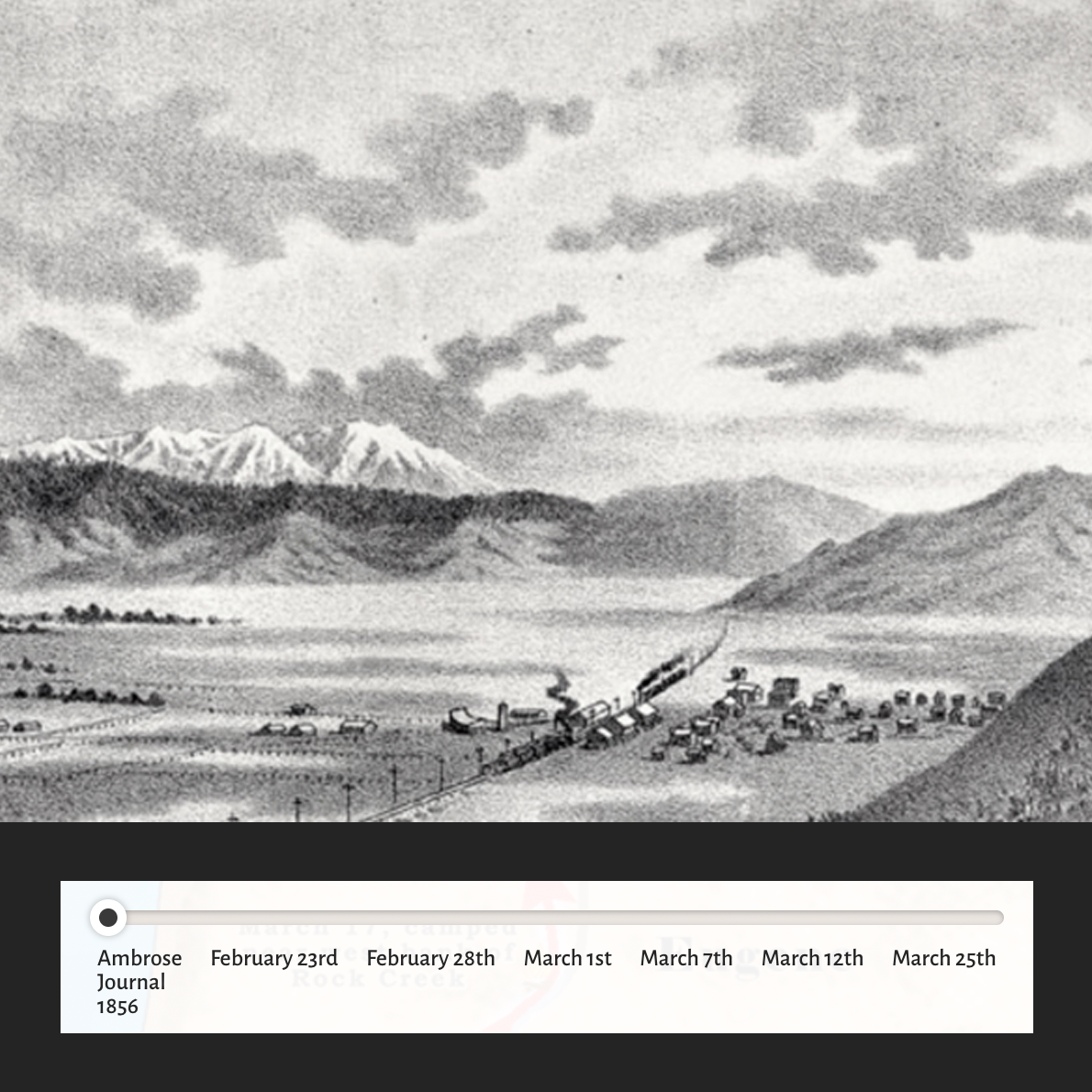
February 23, 1856, Indian Agent George Ambrose began moving 325 "Indian Refugees" from the Table Rock Reservation in Southern Oregon to the Grand Ronde Reservation in the Willamette Valley. Known as the Rogue River Trail of Tears, this journey required the Natives to leave their homelands and travel, on foot, north. The Rogue River Trail of Tears would take 33 days and cover 263 miles. Agent Ambrose kept a journal during the removal. We will share with you some of his entries as a glimpse into that history.
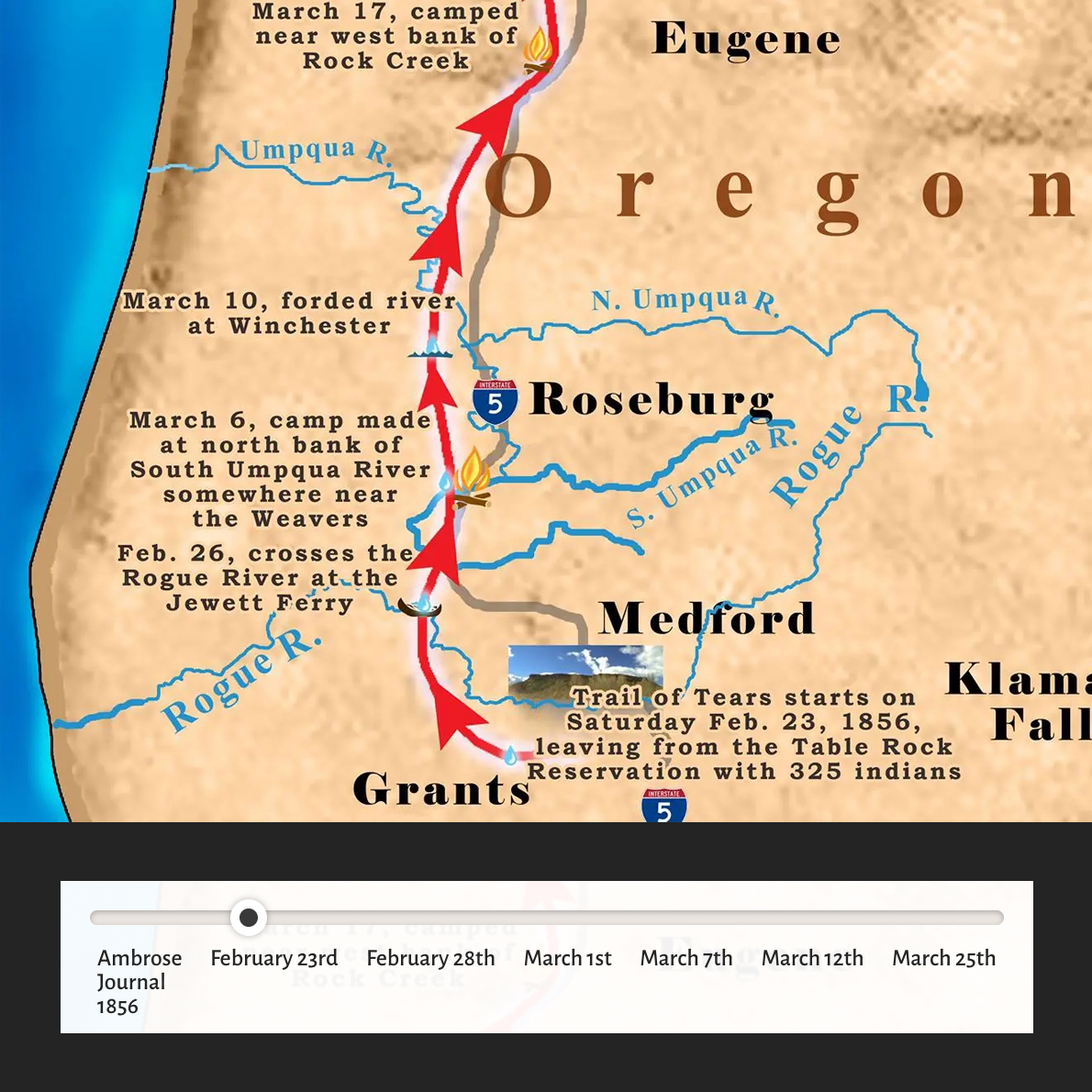
"February 23rd Saturday, The weather still continues to be pleasant. It was found necessary to have more teams than at first contemplated. I accordingly proceeded to Jacksonville for that purpose, and also to provide some articles, such as clothing and blankets to add to the comfort of the Indians, although the weather is sett [sic] down as pleasant. It certainly would be regarded as such, especially at this season of the year, however the nights are quite frosty and the morning’s cool, sufficiently so, to render it necessary that they should be provided with Tents, Blankets, shoes & such necessaries as would tend to promote their comfort while on the journey which being procured the day was spent in distributing the articles among them. Also two additional teams were secured to convey the sick, aged, and infirm. Our teams now number eight with I fear will not be sufficient. Thirty four Indians are disabled from traveling by reason of Sickness aside from the aged and infirm, who will as a matter of course, have to be hauled."
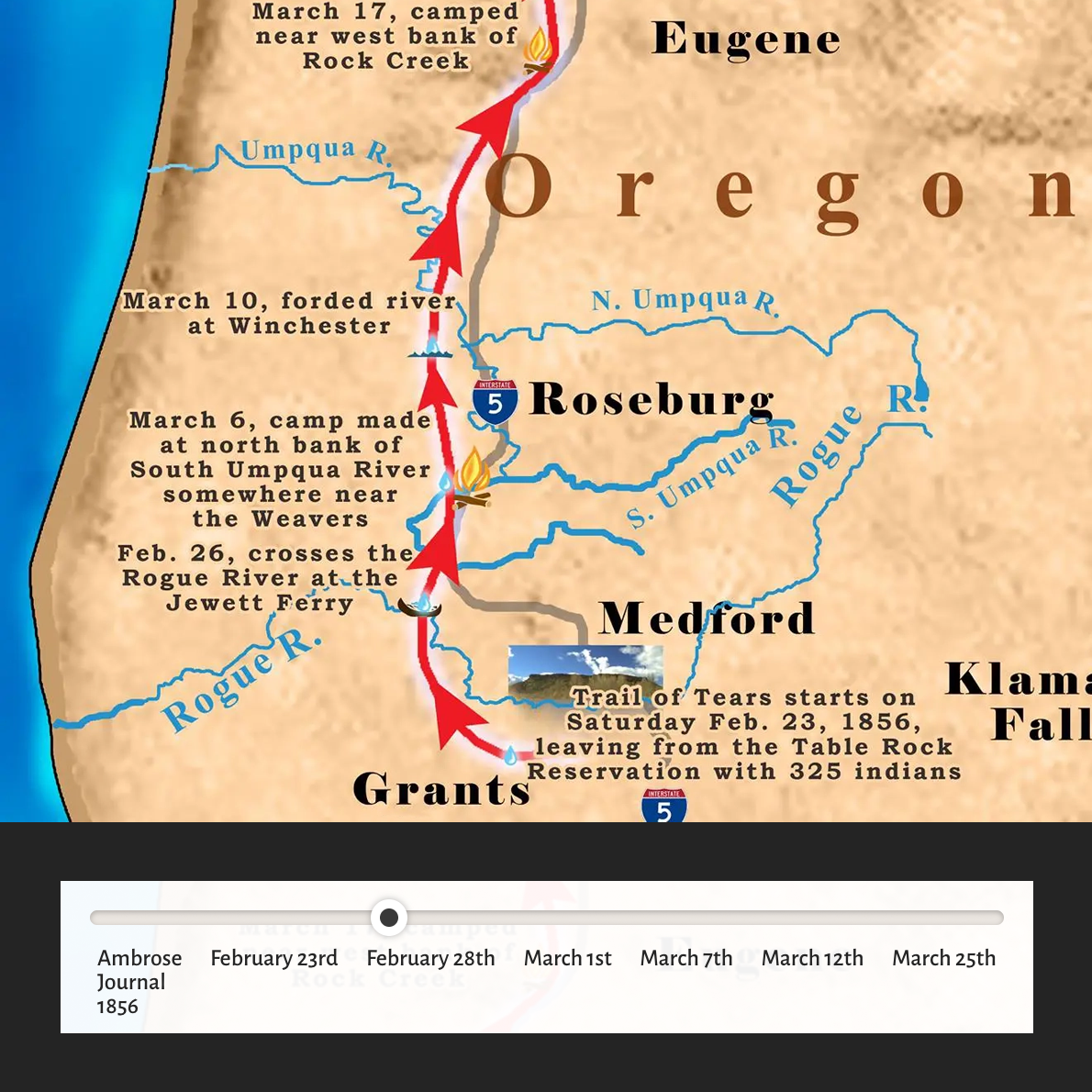
"February 28th Thursday Frosty & cool again this morning. While about preparing to leave camp some person killed an Indian who had wandered off some distance from camp in search of his horse which had strayed off during the night, which caused some considerable excitement among the Indians as it went to prove the statement previously made by some evil disposed persons, to wit: that they will be killed by the way. We learned this morning that a party of evil disposed persons have gone in advance of us, as is suppose to annoy us, or kill some friendly Indians. A messenger was immediately dispatched to Capt [Andrew J.] Smith at Fort Lane for an additional force to escort us to or thro[ugh] the Canyon is it should be necessary….”
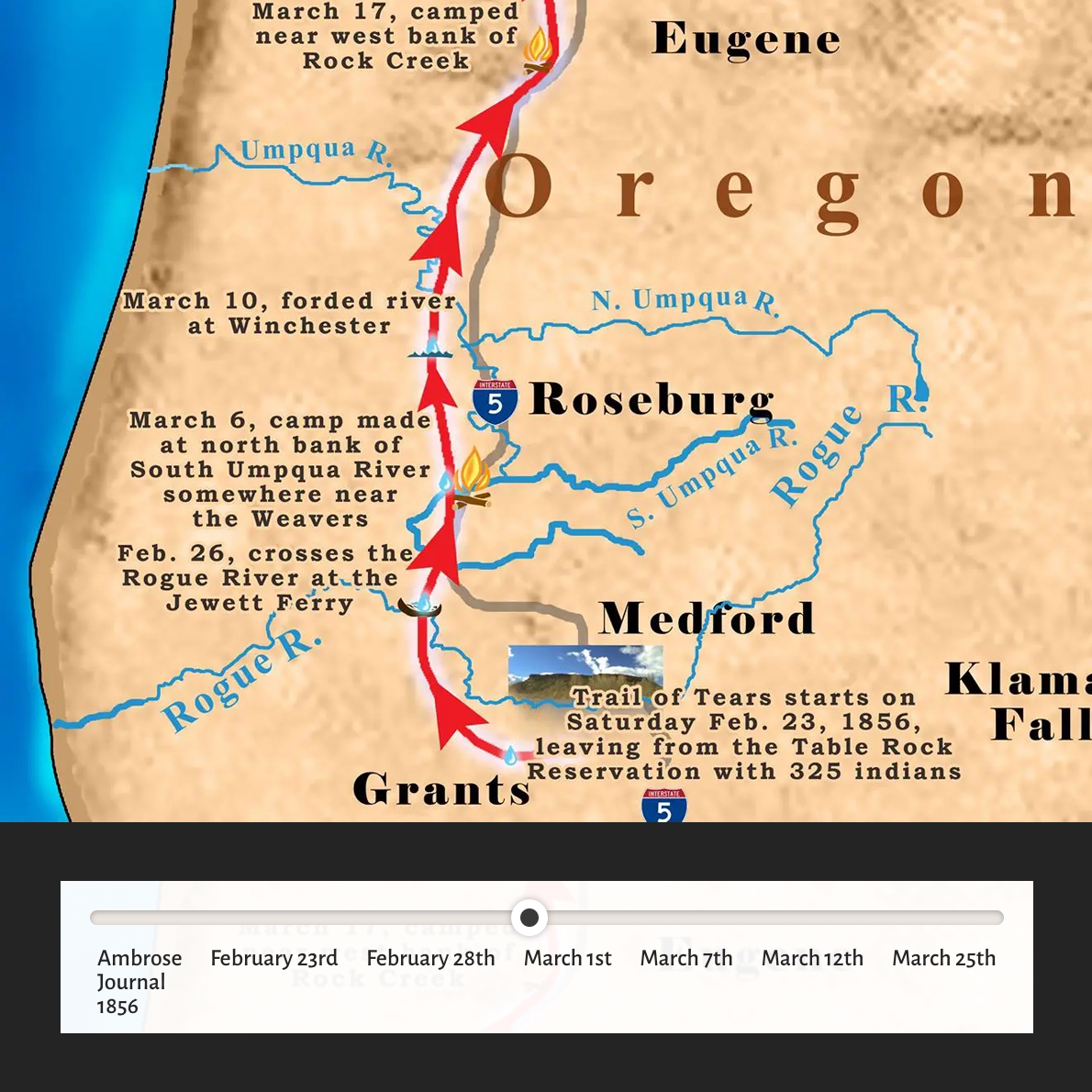
"March 1st Saturday Quite a pleasant spring like morning. Everything being in readiness by times we took up our line of march over a rough hilly mountainous country, and the roads were truly in a horrible condition. I omitted to mention that on Thursday last we took a Northwood direction and left the Rogue River to the South of us which brought us among some rough hills, between the Umpqua and Rogue River. After passing the Grave [C]reek Hills we learned that Mr. Love and some others were awaiting us at the house, intending to kill an Indian. Upon going to the house I found it to be a fact, talked with the gentlemen, told them the consequences, went back & requested Capt. Smith to arrest Mr. Love and turn him over to the civil authorities. We passed the house however without any difficulty and encamped on a small stream two miles North of Grave Creek. We drove today a distance of eight miles. We are now in the midst of hostile Indian Country and not entirely free from danger.”
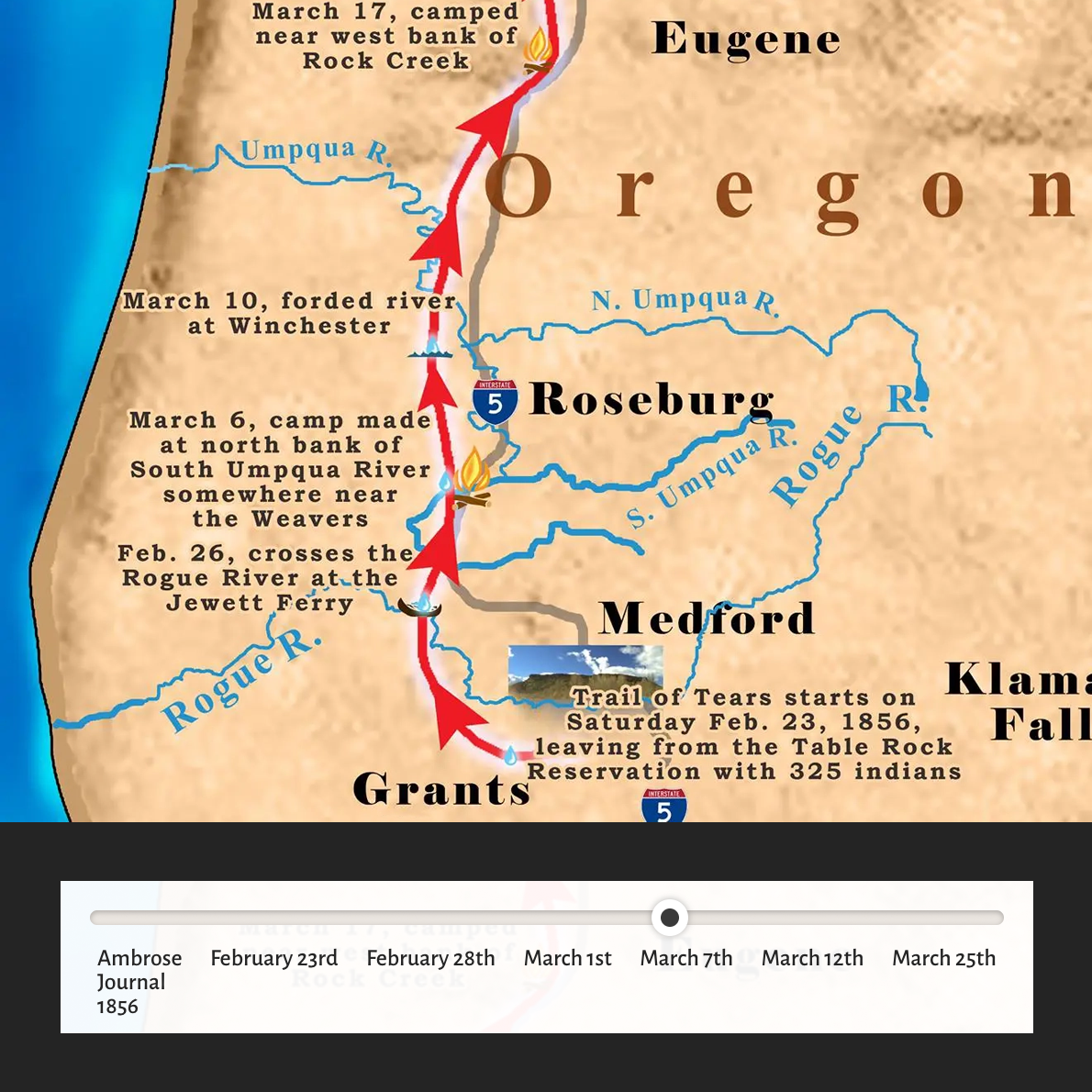
"March 7th Friday The weather still continued cool & frosty of nights and pleasant thru the day. Our road today hilly & in places quite rocky. An Indian woman died this morning & the number of sick increasing. It was found necessary to hire or buy another team. I soon procured one & continued our march. We drove today a distance of ten miles & encamped in Round Prairie on the South Umpqua yet.”
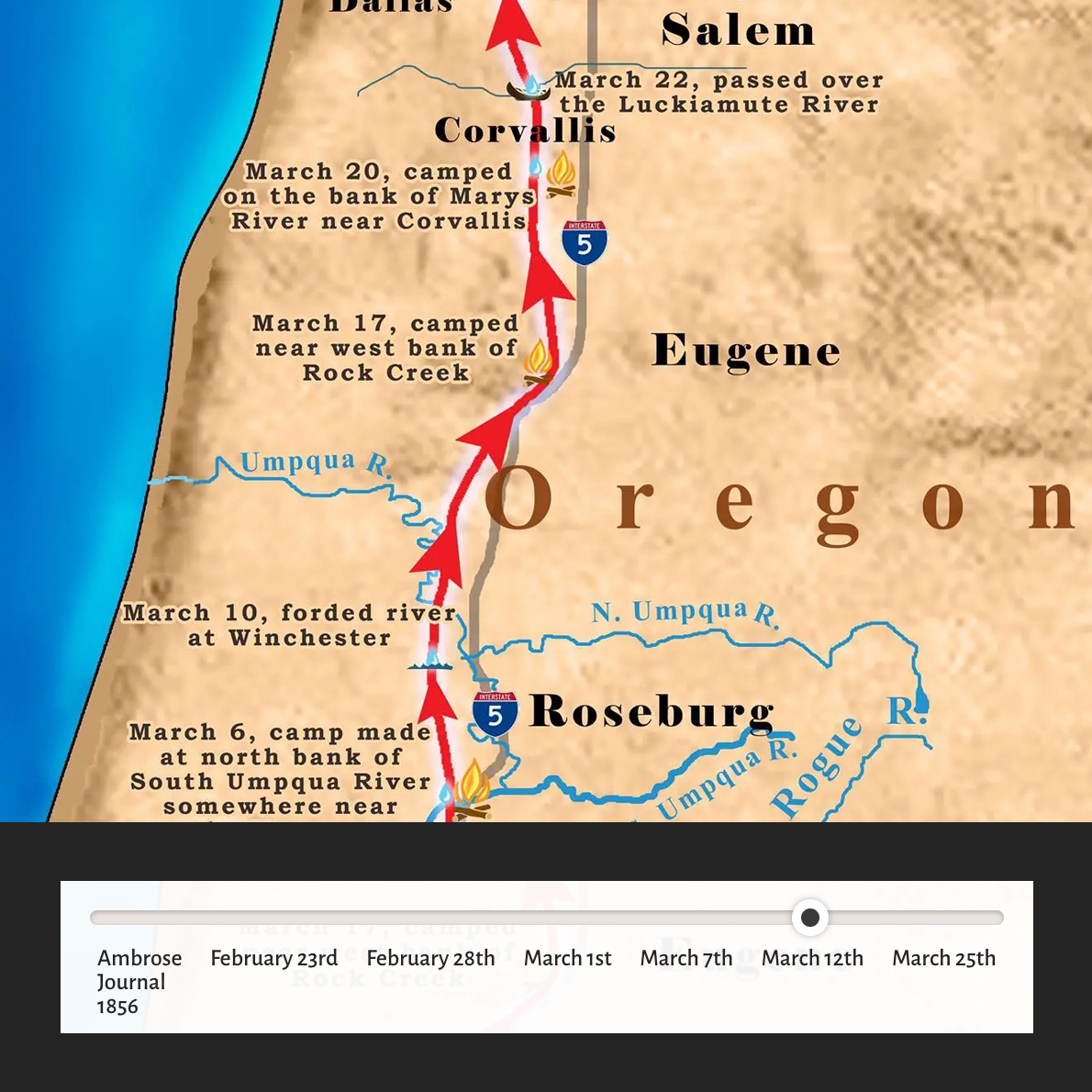
"March 12th Wednesday Clouds & threatening rain, we had some trouble in finding our cattle. We however succeeded in getting them together about ten o’clock. After traveling through a canyon about one and a half miles we arrived at Calapooia Creek. Our rout[e] lay directly up the creek for two & a half miles over hilly but prairie Country when we crossed the stream on a bridge at [Dorsey] Bakers. For the remainder of the day our rout[e] lay northword & over some steep hills. About four miles from the mills we struck camp at what is called [O]akland. Two deaths occurred today since we camped-one man & one woman.”
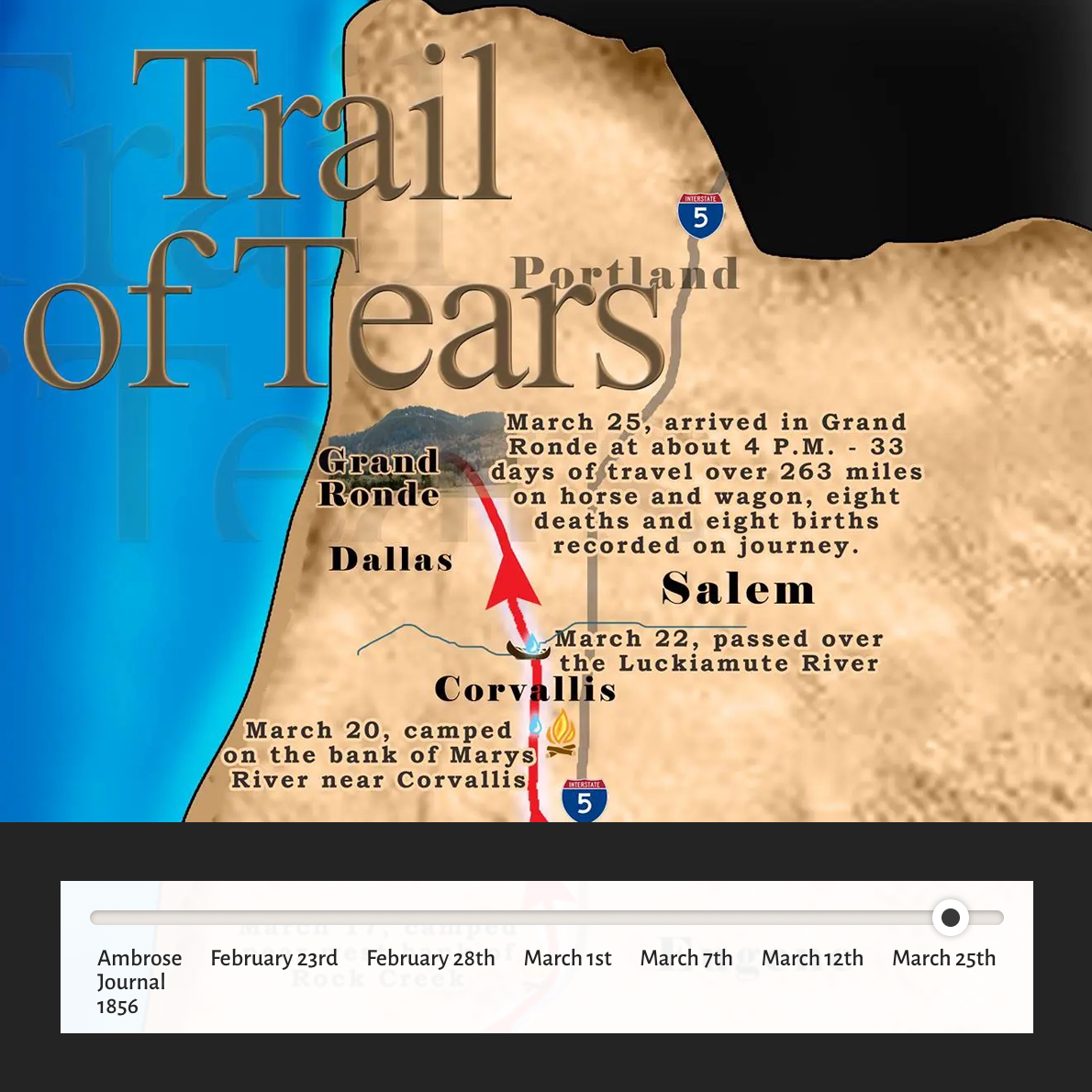
"March 25 Tuesday Clear & pleasant. We got an early start this morning and after driving hard all day reached the [Grand Ronde] Reservation about four oclock in the evening after driving a distance of sixteen miles. So ends my journey & journal. After a period of thirty three days in which we traveled a distance of two hundred & sixty three miles. Started with three hundred and twenty-five Indians. Eight deaths and eight births leaving the number the same as when started.” Final journal entry of Agent Ambrose, Rogue River Trail of Tears It was at this spot, near our Plankhouse, that the Rogue River Trail of Tears came to an end. And while Agent Ambrose states, “So ends my journey & journal”, the story and the journey of the Grand Ronde people would persist. We are in awe over the response to these posts. Thank you. Thank you for taking the time to learn a little bit more about the history of the Grand Ronde people. Unfortunately, the story of the Rogue River Trail of Tears is not unique because these removals occurred throughout Indian Country. However, this history is a part of where we come from and is often ignored. Therefore, it is our responsibility to tell our own history because we must understand where we have been to understand where we are going.
More from our History
